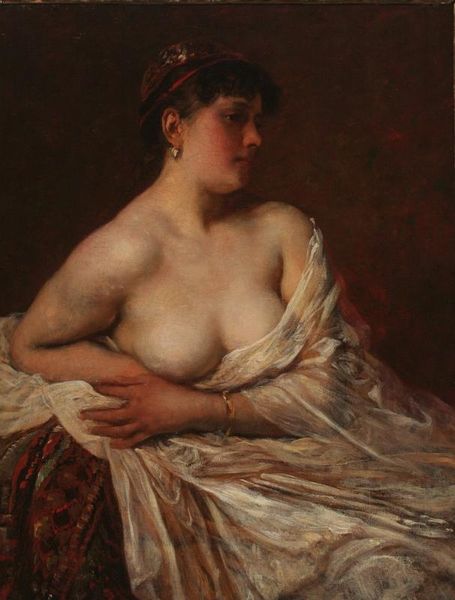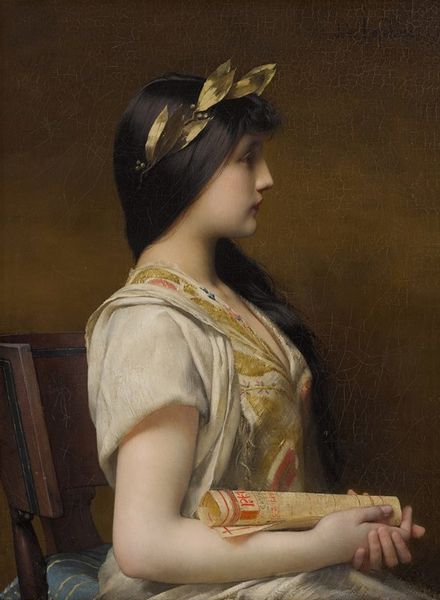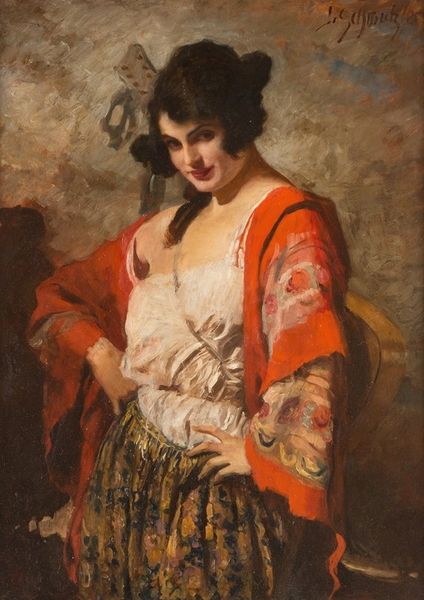
Copyright: Public Domain: Artvee
Curator: Alexandre Cabanel painted "Samson and Delilah" in 1878. This historical painting presents a biblical scene, capturing Delilah’s betrayal in exquisite detail, firmly placing it within the tradition of academic art. Editor: The first thing I notice is the incredible tactile quality. The way Cabanel renders fabric and skin, you almost want to reach out and touch it. Look at the heavy, embellished metal of the belt versus the airy silk draped across her. It feels almost too opulent. Curator: That opulent display definitely aligns with Cabanel's artistic position, reflecting the values and aesthetic tastes of the late 19th-century French Salon. This painting not only illustrates a famous biblical story but also embodies the period’s obsession with Orientalism and idealized beauty standards. The erotic charge feels meticulously constructed to appeal to a bourgeois audience. Editor: Yes, I see that calculation in her gaze; a vacant sort of satisfaction. Her touch appears practiced, the ease with which she steals Samson’s power is frankly terrifying. Cabanel, through material depiction, turns Delilah’s beauty into a tool of subjugation, and shows a literal consumption and diminishment of Samson's physicality. He becomes almost inanimate. Curator: Precisely. It speaks volumes about how power dynamics were depicted and consumed during this period. Note the theatrical lighting that spotlights Delilah while leaving Samson in shadow, suggesting a shift in historical narratives focusing on female agency – albeit, in a deeply problematic and gendered manner. It serves as a potent statement on societal anxieties around shifting power roles. Editor: The very act of rendering the scene with such painstaking realism implicates the viewer. Are we admiring a woman who has cleverly manipulated the social systems around her? Or simply reveling in her image and its implied wealth and comfort, completely complicit in a violent act against labor and flesh. Curator: That duality is exactly where Cabanel’s painting succeeds, by turning this deeply entrenched social narrative on its head and presenting this act of violent betrayal in the light of a new cultural obsession. It demands a careful evaluation of the socio-political conditions within which such a subject gains popularity. Editor: Agreed, Cabanel gives us much to consider concerning both the material cost, and human sacrifice involved in propping up these archetypal narratives, and also challenges us to examine what about Delilah still enthralls.
Comments
No comments
Be the first to comment and join the conversation on the ultimate creative platform.













